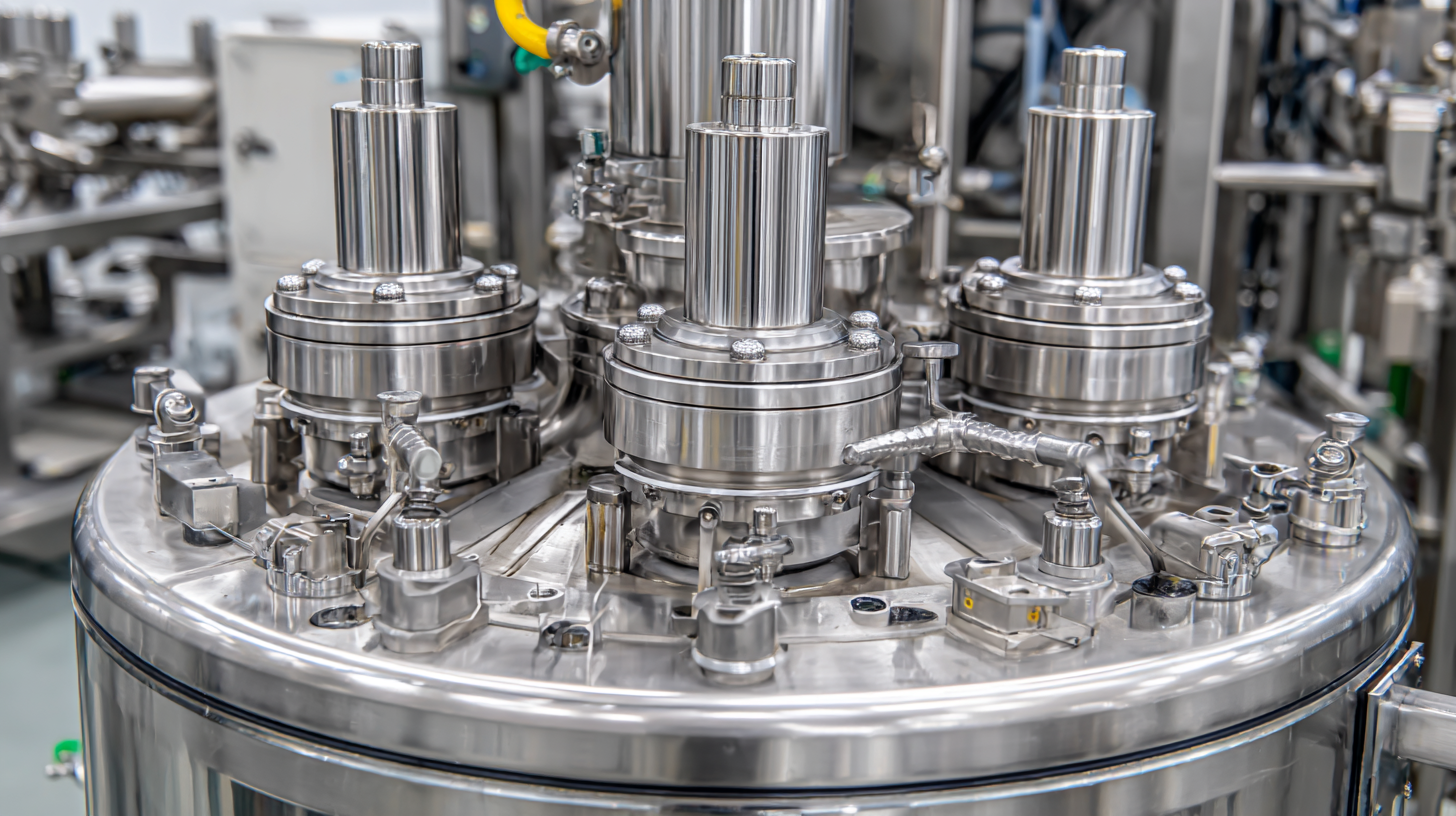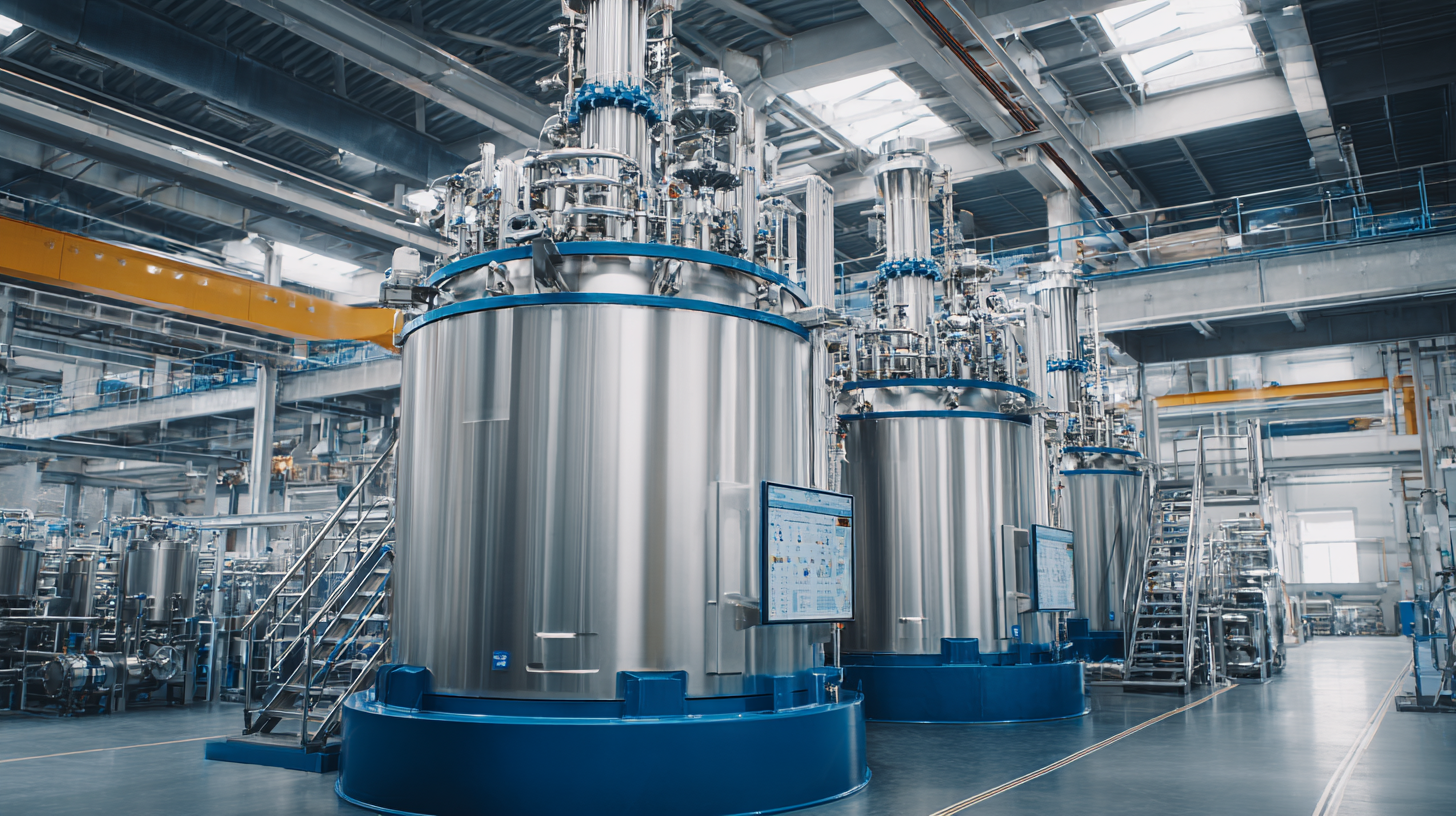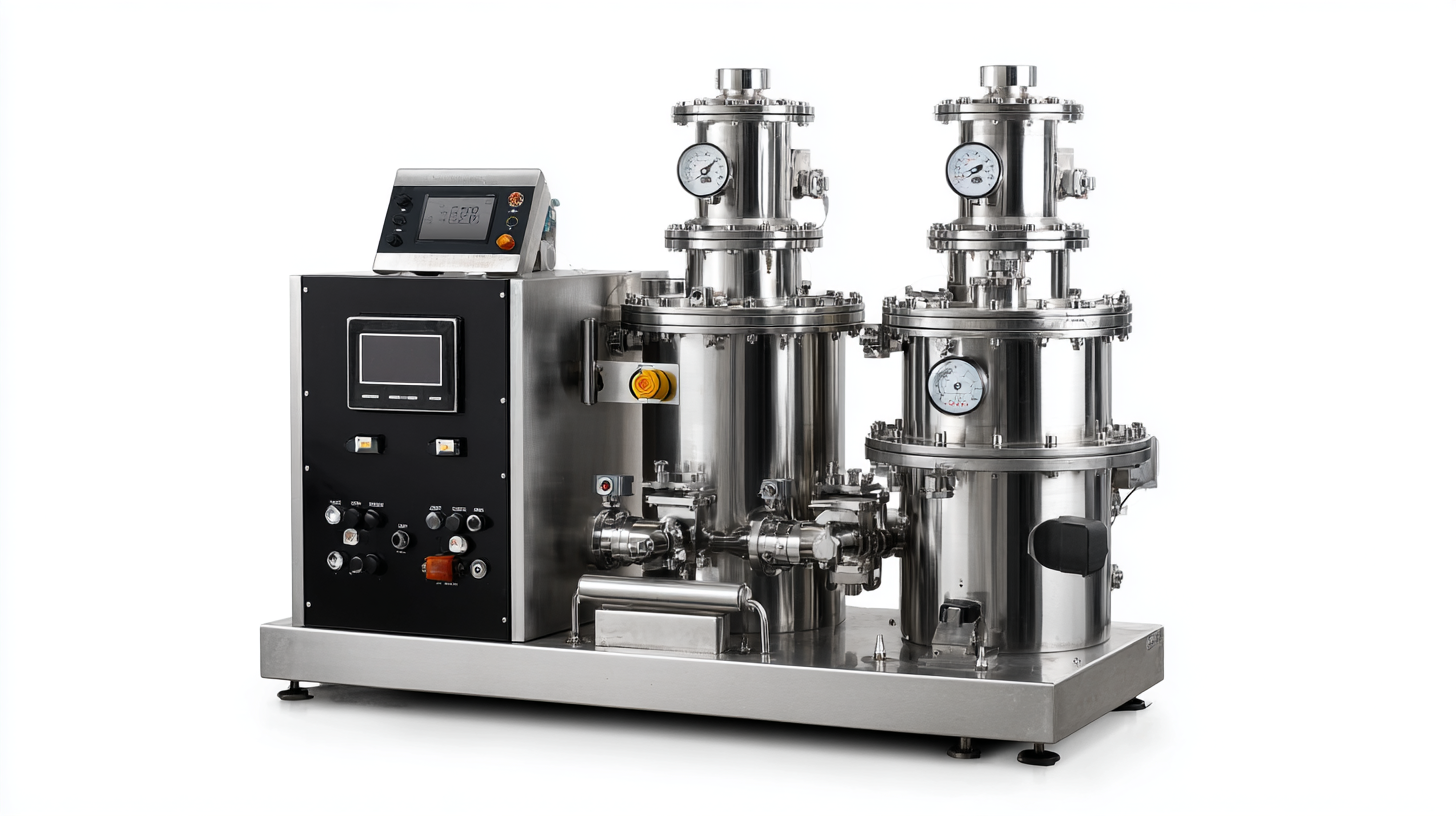Hey there! If you've been keeping an eye on nanotech these days, you probably noticed it’s a pretty fast-moving field. One thing’s for sure—there’s a big buzz around finding better, more reliable equipment to get the job done. High Shear Homogenizers are really at the heart of making sure particles are consistently tiny, which helps products stay stable and work better. You see them everywhere—pharma, cosmetics, even food—you name it. It’s pretty crazy: a recent report predicts that the global market for these machines could hit around USD 1.5 billion by 2026, growing at roughly 5.4% each year from 2021 onwards. As the industry keeps expanding, it’s super important for buyers worldwide to pick the right High Shear Homogenizer tailored to their specific needs.

Here at CAS PETER (HANGZHOU) NANOTECHNOLOGY CO., LTD, we’re all about offering top-notch high pressure homogenizers and microfluidizers that match a variety of customer requirements. To help you out, we’ve put together a handy checklist to guide you in choosing the equipment that truly fits your goals and tech setup.
When you're looking at high shear homogenizers, a lot of buyers around the world run into some pretty common issues that can complicate choosing the right one. One of the main worries is the inconsistency in how the particle size gets reduced. You see, differences in the input materials—things like viscosity or density—can make the results really unpredictable. That’s why it’s super important for buyers to pick homogenizers that are versatile enough to handle a variety of materials, so they can get that consistent, uniform final product they want.
Another issue folks often run into is maintenance and how reliable the equipment is. Since high shear homogenizers are used in tough, demanding applications, they tend to wear out over time. It’s a good idea to look for machines that are easy to clean and maintain—like those with quick-access parts—and maybe even come with features like self-diagnostics to keep tabs on how they’re doing. Investing in a dependable piece of gear means less downtime and smoother operations, which is a big deal for anyone, especially if you’re dealing with the global market and trying to choose the right high shear homogenizer.
When you're choosing a high shear homogenizer for your industrial projects, it’s really important to get a good grip on what features matter most if you want top-notch results. One key aspect you shouldn’t overlook is the shear rate — it’s a big deal because it directly impacts how small your particles get and how stable your final products are. High shear mixers, or HSMs for short, are designed to deliver intense localized energy, which can drastically cut down on particle sizes in dispersions, boosting the quality of emulsions and suspensions. There’s plenty of research backing this up, showing that high-pressure homogenization (or HPH) really does a great job at reducing soy protein isolate particle sizes and even improving the stability of casein-polysaccharide combos in specialized medical diets.
Another critical thing to keep in mind is whether the machine can handle materials with different thicknesses and viscosities. High shear homogenizers need to work well with thick, high-viscosity stuff—something especially important in dairy and protein enrichment processes. Studies have shown that HPH can make dairy powders dissolve better and improve how they flow and behave in liquids. Plus, it’s pretty impressive how HPH techniques also boost the functionality of plant-based proteins like pea protein isolate. Basically, modern homogenization needs to be flexible enough to tackle all kinds of materials and formulations, and these features help make sure you're covered.
When you're choosing a high shear homogenizer, it's pretty important to look at how well it actually performs—because that’s what makes sure you get the best results for whatever you're working on. Speed plays a big role here; there’s this study from the International Journal of Industrial Technology that shows if you run the machine above 3000 RPM, you'll see a pretty noticeable drop in particle size, which helps make emulsions much more stable. And when you combine that with a good rotor design, those high shear rates really boost dispersion and ensure everything stays uniform. That’s especially important in industries like food and pharma, where consistency isn’t just nice to have, it’s crucial.

Another thing to keep in mind is efficiency—an absolute must for buyers worldwide. According to a report from the Food Processing Industry Association, homogenizers built with energy savings in mind can cut operational costs by up to 30% without sacrificing how much they process. That’s not just about saving money, but it’s also a win for sustainability since they use less energy. Plus, you want a machine that can keep up these high standards over time—reliable performance is key. Regularly checked-out machines usually show less than a 5% difference in particle size and viscosity, giving manufacturers peace of mind that their production line won’t suddenly go off-course.
When it comes to high shear homogenizers, keeping up with regular maintenance is pretty much essential if you want your equipment to work smoothly and last longer. Today’s homogenizers are packed with fancy features that can sometimes make upkeep feel a bit overwhelming. That’s where new tech, like generative AI, really steps in to help out. Research shows that AI can actually improve predictive maintenance — meaning, you can spot problems early on and avoid those costly repairs down the line.
So, if you're serious about maintaining your homogenizer properly, start by checking in on how it’s running regularly. Using AI-powered condition-based maintenance tools can give you valuable data and insights into your equipment’s health. Plus, training your team to troubleshoot common issues can really boost overall efficiency. Sometimes, a hands-on training session focusing on real-world problem solving makes all the difference.
Another smart move is to adopt a proactive approach. Experts say that setting up a solid, scheduled maintenance plan tailored specifically to your machine’s needs makes a huge difference. And don’t forget to stay in the loop with the latest tech — like explainable AI, which helps you understand what's causing certain maintenance issues, especially in complex systems. Integrating these tools with IoT devices not only makes management easier but also more comprehensive than ever.
When you're choosing a high shear homogenizer, one thing that’s really important—especially for global buyers—is making sure the materials are compatible. Why? Because cross-contamination can be a major headache, leading to big financial losses and risking the integrity of your products. This is a big deal in industries like pharma and food processing, where the rules are pretty strict. Funny enough, a report from Grand View Research estimates that the worldwide market for these homogenizers could hit around $1.76 billion by 2027. That’s a clear reminder why picking the right equipment isn’t just about specs—it's about upholding top-notch quality.
To avoid any mishaps, you should look into homogenizers made from non-reactive stuff, like high-grade stainless steel or certain plastics that won’t leak or transfer harmful chemicals. The International Journal of Food Science & Technology even suggests that using the wrong materials can lead to contamination, which could mess up your final product’s safety and effectiveness. Plus, depending on what emulsifiers or additives you’re working with, there’s always a chance that some materials might react undesirably. So, it’s a good idea to do some thorough research on your suppliers, ask for detailed material specs, and be extra cautious to steer clear of costly mix-ups down the road.
| Material Type | Compatibility | Cross-Contamination Risk | Recommended Seal Material |
|---|---|---|---|
| Stainless Steel | Excellent | Low | EPDM |
| Plastic (Polypropylene) | Good | Medium | Silicone |
| Ceramic | Excellent | Very Low | Fluoropolymer |
| Rubber | Fair | High | Nitrile |
| Glass | Good | Medium | PTFE |
When choosing a high shear homogenizer, it's really important for global buyers to think about the costs involved. Picking the right machine isn't just about getting the best quality — you also need to consider how it fits into your budget. Sure, high-end homogenizers often come with all the fancy tech and sturdy design, which might make them seem pricey upfront. But honestly, investing in a reliable, well-made machine can save you money in the long run. You'll likely see lower maintenance costs, smoother operations, and less waste, which all adds up to big savings over time.
That said, it's a smart move for buyers to do a proper cost-benefit analysis. Sometimes, going for the cheapest option might seem tempting, but don’t forget to factor in possible hidden costs like repairs, downtime, or inefficiencies that could pop up later on. A top-quality homogenizer might cost more initially, but it usually does a better job of reducing particle size and keeping emulsions stable. That means better product quality overall. So, by weighing both the upfront investment and long-term operating expenses, you can make a choice that fits your budget without compromising on the quality of your equipment or your production goals.

: Buyers often encounter inconsistent particle size reduction due to variations in input materials, as well as challenges related to equipment maintenance and reliability.
Variations in viscosity and density of the input materials can lead to unpredictable results in particle size reduction, impacting the uniformity of the final product.
Buyers should look for homogenizers that offer easy access to components for cleaning and maintenance, along with self-diagnostic features to monitor operational efficiency.
High shear homogenizers operating at speeds above 3000 RPM can significantly reduce particle size, enhancing emulsion stability and consistency, which is critical for industries like food and pharmaceuticals.
Energy-efficient homogenizers can reduce operational costs by up to 30%, supporting sustainable practices while maintaining high throughput and reducing energy consumption.
Buyers should ensure the homogenizer can maintain performance levels over time, with machines demonstrating less than 5% variance in particle size and viscosity for reliable production.
A thorough analysis helps buyers balance the initial investment with potential long-term savings, considering hidden costs related to repairs, downtime, and inefficiencies.
High-quality homogenizers typically offer advanced technology and robust design, which can lead to reduced maintenance costs, increased operational efficiency, and better product quality over time.
While they may seem attractive initially, lower-priced options can lead to hidden costs associated with repairs and inefficiencies that affect overall production quality and consistency.
By assessing both the upfront and long-term costs, buyers can align their financial constraints with the need for quality equipment that supports efficient and consistent production processes.







